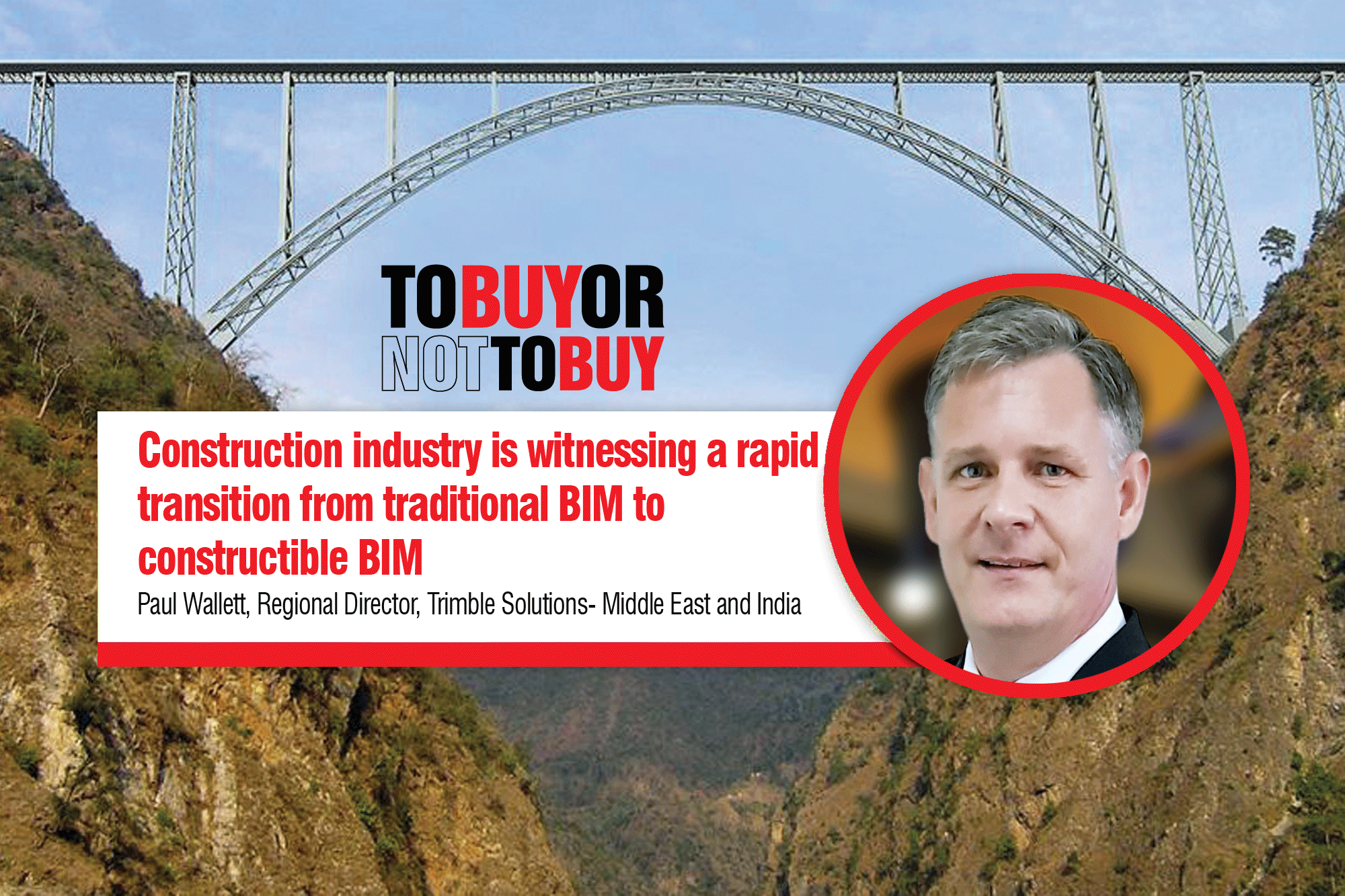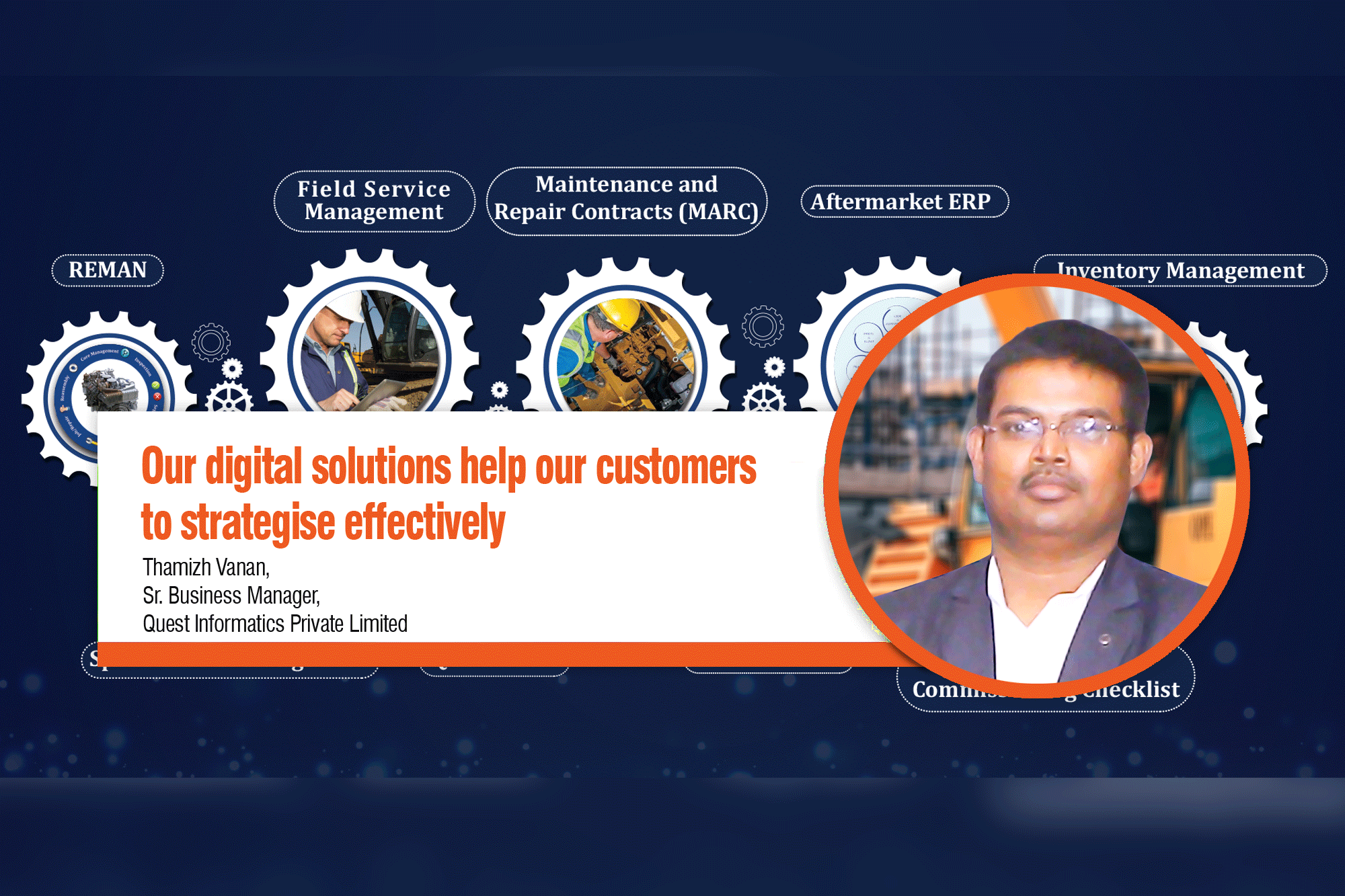Construction industry is witnessing a rapid transition from traditional BIM to constructible BIM
By Edit Team | November 1, 2019 5:37 am SHARE

The ‘design BIM models’ and ‘constructible BIM models’ differ on the level of accuracy, development and richness of detail present in the model itself.
According to you which sector in India has maintained persistent demand and why?
We have seen a persistent demand in the construction industry on account of continuing urbanization and a sustained government push for new infrastructure development. Various government initiatives like Housing for all and smart cities, besides other economic policy decisions taken by the government have stoked this demand. The affordable housing initiative, amongst other projects has received significant industry interest and investments, and is thus acting as a powerful catalyst for the construction industry. Such initiatives not only generate more consumer demand but are also driving a wider adoption of cutting-edge technology in the construction industry amongst construction companies and related firms in the industry. Importantly, the government’s declaration of fiscal Year 2019-2020 as the ‘Year of the Construction Technology’ and simultaneously announcement of INR 100 lakh crore investments in infrastructure projects has generated a lot of positive sentiment and enabled the industry to shift gears.
Allowing of up to 100 per cent FDI for townships and settlement development projects has also encouraged a lot of global players to come forward and stake a claim in the Indian market. Today, the Indian construction industry ranks third among the 14 major sectors in terms of direct, indirect and induced effects in all sectors of the economy. Private equity and venture capital investments alone in the sector had crossed US$ 1.47 billion between Jan-Mar 2019.
In fact, an annual average growth of 6.6 per cent is predicted for the Indian construction industry for the next 10 years, and this is a good sign and harbinger of long term growth for the industry and its stakeholders.
How far digitalisation has transformed the business in construction and infrastructure sector?
Construction is a traditional industry that has been around since the dawn of human civilization. In comparison, other industries that have actively embraced digitalisation are often only a few decades old; even industrial manufacturing is barely a few centuries old.
Therefore, even though we are seeing a gradual and meaningful change leading to digital transformation of many processes in architecture, engineering and construction; it is logical for a traditional industry to embrace full scale adoption of cutting-edge technologies and digitalisation.
The industry has come a long way in the past decade on this count, and it is heartening to note that many large companies in the sector have started using 3D BIM and tools for design, engineering and construction of complex projects. Leaders of the industry no longer document and design on paper, and have instead moved to cloud-based collaboration and truly constructible 3D models. In fact, the whole construction workflow is now being automated with software and platforms such as SketchUp, Tekla Structures and Trimble Connect,which help in streamlining and enhancing efficiencies across various stages of construction. Constructible models created in Tekla Structures help in improving speeds and creating as-built virtual structures that enable construction and infrastructure companies to deliver high-quality projects on time and within budgets.
How has the concept of BIM evolved over the years? Why does the industry need the Constructible process and how can construction productivity be improved?
The global construction industry now firmly believes that Building Information Modeling (BIM) makes planning, construction, and building operations significantly easier and more efficient. However, it’s only in the past few years that it has started to realize the full potential of BIM in the most crucial phase, which is in the actual construction of buildings.
In fact, the construction industry has realized that the actual constructability of a BIM model is an important determinant of success with BIM. In other words, only when a BIM model is truly constructible, does it unlock the true value of BIM in making the construction teams more productive and the process more efficient. Hence, the industry is now witnessing a rapid transition from traditional BIM to constructible BIM.
In simple terms, a 3D building Information model is termed constructible only if it is equipped with enough detail or information that can be applied during actual construction. The ‘design BIM models’ and ‘constructible BIM models’ differ on the level of accuracy, development and richness of detail present in the model itself.
The term ‘constructible’ thus defines the ease and efficiency with which structures can actually be constructed from a 3D BIM model. Applying the principle of constructability to BIM, the architects and engineers can ensure that the design and fabrication models are as-built, MEP contractors can use this model to reduce data capture overheads. Constructibility embedded models help increase construction speed and efficiency, minimize construction waste and increase sustainability over a building’s lifetime.
Apart from the above mentioned benefits, constructible BIM goes a step further and also provides owners or managers of buildings with useful data related to various building components. Facility managers get access to real-time information about the services or equipment installed in the building; and they can make accurate assessments of the condition of such assets, how the building operates and where efficiencies can be made, which in turn enables better operations and utilization of assets.
How do you deal with liquidity constraints in the market?
The construction sector is one of the key contributors to economy accounting for ~8 per cent of GDP, but has been facing some liquidity constraints in the past few years due to certain factors. With the implementation of Real Estate (Regulation and Development) Act, 2016, which mandates developers to block 70 percent of the funds of a realty project into a third party Escrow Account, projects are now being worked upon with more rigor and discipline but the sector continues to feel the after-effects of several projects getting stalled owing to liquidity constraints in the past.
Paul Wallett, Regional Director, Trimble Solutions- Middle East and India
Cookie Consent
We use cookies to personalize your experience. By continuing to visit this website you agree to our Terms & Conditions, Privacy Policy and Cookie Policy.
































-20240213125207.png)

























